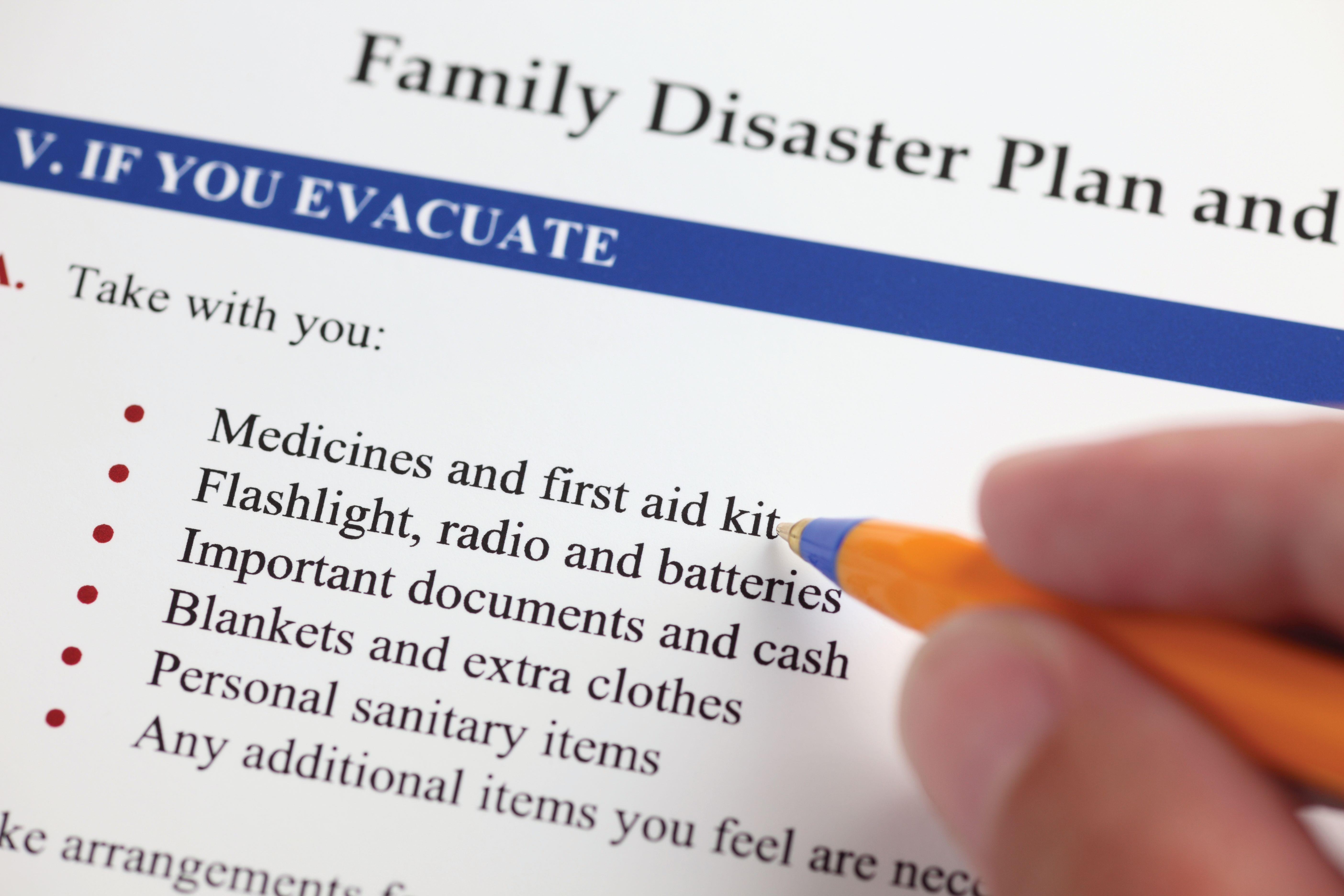Disasters can happen at any moment – floods, tornadoes, wildfires, acts of terrorism, etc. Encourage your citizens to prepare a family emergency plan template using the following 10 tips.
Make sure you and your family understand emergency preparedness. Family safety and preparedness involves:
- Knowing what types of disasters are likely to occur in your area.
- Developing and practicing an emergency plan.
Know your work, school, and daycare plans:
- Know the emergency plans of each facility and how to communicate with staff.
Ask your child’s school or daycare:
How they will contact families in an emergency.
If they store enough food, water, and other supplies.
If they are equipped to shelter in place.
If they have an evacuation plan.
Create secondary plans for your children if you can’t reach them.
Build your emergency kit:
- Here are some examples of basic family emergency kit supplies:
- Three-day supply of nonperishable food and water (one gallon per person per day)
- Battery-powered/crank radio, flashlight, and cell phone
- Extra batteries/chargers for all devices
- First aid kit (see #4 below)
- Waterproof matches or lighter
- Whistle
- Extra clothing (temperature-/climate-specific)
- Sleeping bags or blankets
- Utensils, cooking gear, and a can opener
- Waterproof emergency document holder with copies of important documents (e.g., passports, medication lists, insurance policies, bank account records)
- Cash or traveler’s checks
- Special-needs items (e.g., prescriptions, eyeglasses)
- Items for infants or other unique family needs
- Moist towelettes, garbage bags, and twist ties for personal sanitation
- Toiletries and feminine hygiene products
- Pet food and water (if you have pets)
Make your first aid kit:
- Make first aid kits for your home and each car. Here are some items they should contain:
- Various shapes and sizes of adhesive bandages, dressings, and gauze pads
- Cohesive bandage (3”) and adhesive tape (2” wide) roll
- Germicidal hand wipes or alcohol-based hand sanitizer
- Sterile gloves (e.g., latex)
- Antibacterial, antibiotic, and burn ointments
- Soap
- Instant cold pack
- Scissors, needles, tweezers, and safety pins
- Thermometer and petroleum jelly or other lubricant
- Aspirin and nonaspirin pain relievers, antidiarrhea medication, antacids, laxatives, and vitamins
Have a go-bag ready and easily accessible in case you must evacuate. Here are some items it should contain:
Battery-powered/crank radio, glow sticks, flashlight, and cell phone
Batteries
Whistle
Dust mask
Pocket knife (multiuse) or multitool
Waterproof matches or lighter
Shoes, change of clothes, poncho (for rain), gear/tent
Mylar emergency blankets
Water, food, can opener
First aid kit
Waterproof emergency document holder with copies of important documents (e.g., passports, medication lists, insurance policies, bank account records)
Personal hygiene items
Special-needs items for infants, children, pets, and people with access and functional needs
Create a support network:
Your family might not be together when disaster strikes, which is why you must have an extended support network. Include three people in places you spend a lot of time and someone from out of town.
- Share copies of your emergency plan.
- Make sure they know your meeting point or shelter location so they can direct rescuers to the correct location.
- Practice your emergency plan.
Contact your support network every three months.
Make detailed contact lists:
Keep a copy in your at-home emergency kit and post a copy in an accessible location. The list should include:
The addresses, phone numbers, and home, work, and school evacuation locations.
The name, birth date, and important medical information of each family member.
The name, phone number, and email address of an out-of-town contact.
The neighborhood meeting place and its phone number.
The out-of-neighborhood meeting place and its phone number.
The names, phone numbers, and policy numbers of your doctors, pharmacists, medical/home insurance, homeowner/rental insurance, and veterinarians.
Understand how to shelter in place:
- Write down what to do and practice it.
- Make sure nothing in your emergency kit is expired, and that it is easily accessible.
Know how to evacuate:
- Plot the floor plans of your home, indicating two exits from each room and two exits from the home. Post a copy at eye level in each child’s room.
Plan where to go and how to reunite your family. Preselect several destinations in different directions to provide options.
Practice your plans and explain to your children which plan to use in which situation.
If you had to evacuate, be safe upon returning home:
- Have a checklist prepared.
- Walk cautiously around the outside and check for loose power lines, gas leaks, and structural damage.
Do not enter if you smell gas, if floodwaters remain around your home, or if your home was damaged by fire and has not been declared safe to enter.
Enter your home with caution and check for damage. Watch for loose boards and slippery floors.
For more information about educating your community on emergency preparedness, explore our extensive library of Emergency Preparedness & Management products.
